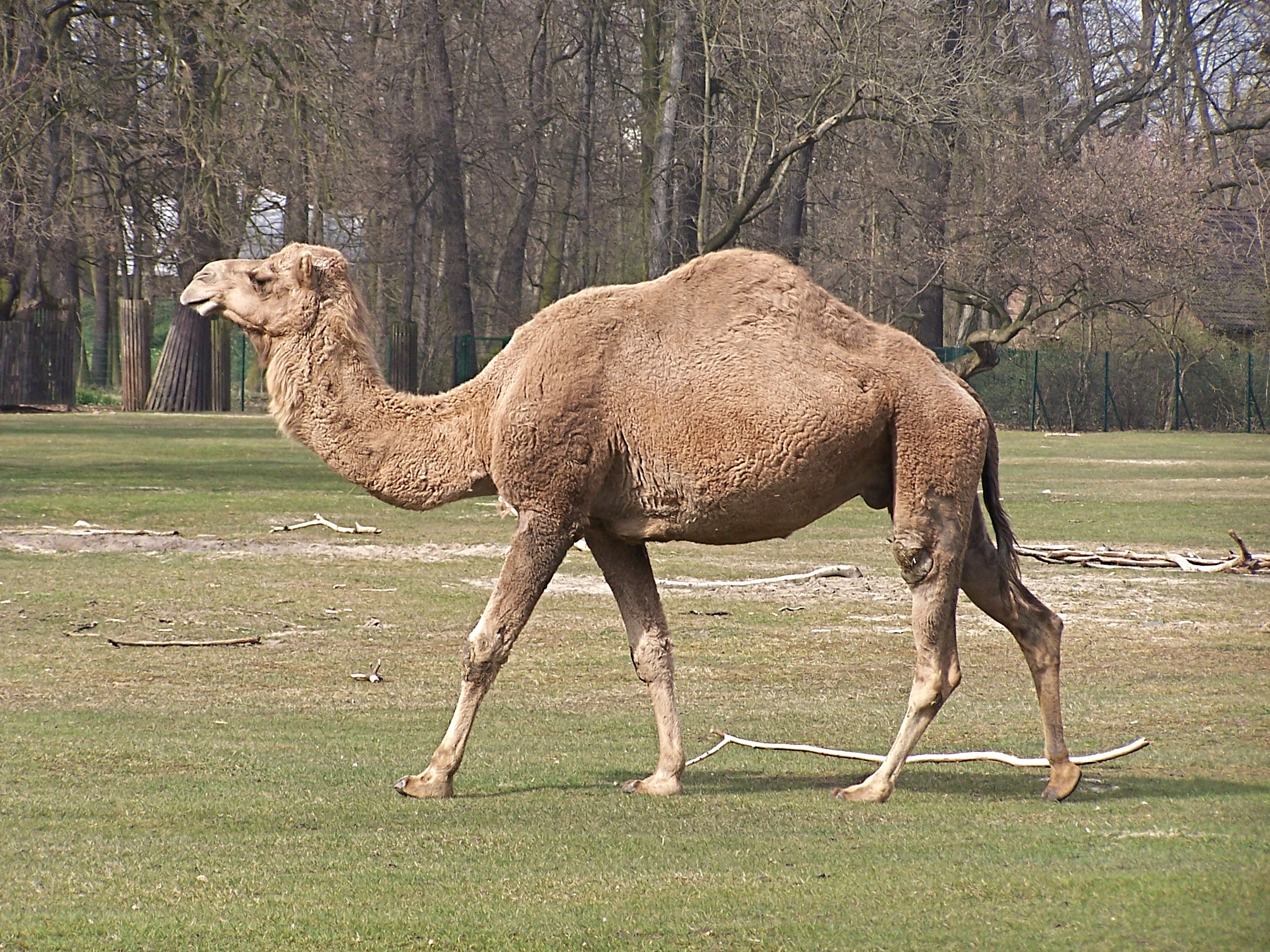
Arabian camel, or the Indian camel (Camelus dromedarius)
Phylum —chordata
Class — mammalia
Order — artiodactyla
Family — camelidae
Genus – camelus
Appearance
Adult males range in height between 1.8 and 2 m (5.9 and 6.6 ft) at the shoulder; females range between 1.7 and 1.9 m (5.6 and 6.2 ft). Males typically weigh between 400 and 600 kg (880 and 1,320 lb); females range between 300 and 540 kg (660 and 1,190 lb). The distinctive features are its long, curved neck, narrow chest and single hump, thick, double-layered eyelashes and bushy eyebrows. They have sharp vision and a good sense of smell. The male has a soft palate nearly 18 cm (7.1 in) long, which it inflates to produce a deep pink sac. The palate, which is often mistaken for the tongue, dangles from one side of the mouth and is used to attract females during the mating season.
The coat is generally brown but can range from black to nearly white. The hair is long and concentrated on the throat, shoulders and the hump. The large eyes are protected by prominent supraorbital ridges; the ears are small and rounded. The hump is at least 20 cm (7.9 in) high.
Habitat
Arabian camel has not occurred naturally in the wild for nearly 2,000 years. As domestic animals, they are generally found in arid regions in the Middle East, northern India and Africa, particular in the Sahara Desert. There is also significant feral population of camels in Australian deserts.
Behavior
Arabian camels are diurnal, generally shy and usually found in groups of 4 to 6. In a family group the male is dominant and directs his family from the rear, with females taking turns leading. They tend to travel walking in single file. They are very social and will greet each other by means of blowing in each other's faces. These camels like to scratch their bodies with their legs, or with their teeth. They also rub against trees and roll in the sand.
Diet
Camels are herbivorous, their thick lips allowing them to eat things that other animals can't, like thorny plants. When looking for food, they spread over large areas and taking from each plant only a few leaves. It is important that they fill up on available water. Within just 13 minutes they are able to take in 30 gallons (113 liters) of water.
Reproduction
Arabian camels are polygamous. Their breeding season is usually from November and March. Gestation lasts up to 13 months and one calf is born, or occasionally twins. The calf can stand within 8 hours. It remains under the herd's protection until it is old enough to become independent. Camels start to eat grass at between 2 and 3 months and are weaned around 4 months of age. Both males and females are sexually mature around age of 3.
In captivity
Arabian camels have a lifespan of about 40-50 years.
In nomadic or semi-nomadic farming, camels are kept all year round on free grazing. At a settled life style in places with severe winter-they are kept without a leash in sheds with a paddock yard, in southern areas — often under canopies. The camel barn must be dry, with regularly changing bedding (made of the remnants of hay, weeds, reeds). In winter, in case of severe frost, camels are sometimes covered with felt blankets.
Camels are herbivores, so like all herbivores they are given grass, hay, a mixture of cut vegetables, branches, and oats. It is forbidden to feed the animal with other products.
 Russian
Russian
 English
English
























